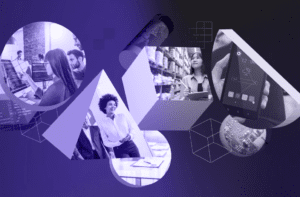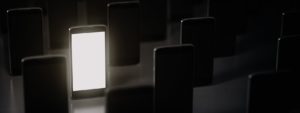Business
Device Management
Hardware
Ultimate Guide to Remote Patient Monitoring Devices
In the last couple of years, remote patient monitoring devices (RPM) have become increasingly prevalent, and for good reason. Today’s devices can help provide quality care from medical professionals and enhance the patient care experience while allowing effective monitoring outside the traditional clinic setting. This can help make quality care more accessible to many and reduce healthcare costs significantly.
The trend has been spurred by the high cost of in-patient care, the effects of an aging population, and the massive pressure on healthcare facilities caused by COVID-19. It’s no surprise that 88 percent of healthcare providers have either invested in or are evaluating investments in RPM technologies.
The healthcare sector is experiencing a paradigm shift in the usage of advanced technologies for healthcare delivery. In this detailed guide to remote monitoring, we’ll explain how every care delivery plan can benefit from them.
What Are Remote Patient Monitoring Devices?
Imagine a scenario where you can easily observe, analyze, and report patients’ acute or chronic conditions no matter their location. Remote patient monitoring devices make this possible for healthcare providers in real-time. RPM specifically refers to telehealth solutions such as wearable devices that can connect patients directly with a healthcare professional for assessment, diagnosis, and recommendations without the patient being there physically.
Remote patient monitoring is the best strategy to monitor a patient’s health outside a traditional clinical setting. Healthcare professionals can use device hubs to collect data from continuous monitoring of chronic diseases, through devices that read glucose levels, blood pressure, sleep patterns, heart rate and so on, without having to bring them into the office or admit them to a long-term healthcare facility. They help cover the shortcomings of in-person check-ups. Physicians and healthcare providers can use RPM devices to determine if a patient is stable, improving, or in need of emergency care.
How Do RPM Devices Work?
Now that you have an idea of what remote patient monitoring devices are, you may be wondering—how do they work?
Here are simple steps to help you understand how RPM devices work:
- A health care provider determines that a patient would need remote physiologic monitoring and prescribes an RPM program.
- With the patient’s consent, the provider deploys RPM to the patient’s home or office to collect their health data, including blood pressure, heart rate, blood sugar levels, weight, and other vital signs.
- The patient is provided with the right devices, including thermometers, pulse oximeters, weighing scales, ECG equipment, blood pressure cuffs, activity trackers, and more to collect their health data. The devices are connected to a hub using Bluetooth or integrated technology. The patients are provided with the necessary training on how to use the technology.
- After setting up the devices, at work or at home, patients are monitored and their vital health data collected several times a day depending on their condition. This information is transmitted via the hub to a platform or server that can be accessed by their healthcare provider.
- Then, medical professionals assess and analyze the information and provide recommendations based on the results. By continuously tweaking each treatment procedure, healthcare providers can also provide the required reassurance that the treatment is working, make improvements, or give directions for emergency care if needed.
Benefits of Remote Patient Monitoring Devices
As the healthcare industry continues to change and evolve rapidly, remote patient monitoring devices promise to deliver benefits to both patients and providers. Let’s take a closer look at the advantages of RPM devices.
Better Quality of Care
RPM provides an effective way for patients to receive quality and continuous care. Using RPM technology, healthcare providers can immediately access vital patient data from anywhere. Using this data, clinicians can better understand the patient’s long-term health performance and eliminate the stress associated with frequent office visits as well as the associated risk of over-treatment. RPM also makes the daily routines of healthcare providers more efficient and reduces the possibility of burnout—resulting in improved patient care.
Even better, RPM provides patients with real-time feedback, training, recommendations, and encouragement to improve their health and quality of life.
Enhanced Patient Engagement
Through remote patient monitoring technology, patients feel engaged and supported, especially when they know that their data is being transmitted to their provider. This empowers them to be accountable from anywhere, knowing that their provider can be contacted if they fail to stick to their health management plan.
Clinicians and other healthcare providers can take advantage of RPM to teach patients what to do as part of their treatment plan. It’s also a great opportunity to prove positive feedback and good news especially when they make improvements to keep them encouraged and focused on self-monitoring.
Improved Access to Continuous Care
Thanks to RPM technologies and telehealth, healthcare providers can provide the best care to patients living in remote or rural areas that may otherwise be inaccessible.
Specifically, RPM is of great help to patients who suffer from chronic conditions, severe acute conditions, elderly patients, and people with disabilities who cannot make frequent trips to the healthcare facility for their checkups.
Moreover, RPM can extend healthcare networks and capabilities in new ways, hence providing easy access to quality care even in incidences where there is a severe physician shortage. It also allows for proper planning for real-time interventions when necessary and providing timely care, preventing the patient’s condition from worsening.
Streamline Workflows and Improve Productivity
RPM benefits clinicians by helping them collect critical data and coach patients effectively, allowing them to prioritize care delivery and provide the required attention to patients that need urgent care. RPM further helps reduce the burden of over-scheduled in-person visits, especially for facilities with severe staffing shortages, allowing clinicians to provide timely care to patients who need priority attention.
By reducing more in-person visits and dedicating more time to patients that need urgent care, healthcare providers can improve productivity by attending to more patients, resulting in increased revenue for the healthcare facility.
Getting Started with The Right RPM Solution
RPM devices are becoming an important part of the healthcare industry. They offer healthcare professionals, practices, and hospitals the power to use advanced technologies to improve overall health outcomes. Proper implementation of these technologies requires extensive knowledge and planning to streamline care and improve patient satisfaction while cutting down on healthcare costs.
Mason is here to offer remote monitoring tools for patients with everything you need to create the easiest and fastest user experience for your end-users across their entire journey. Want to get started with implementing RPM solutions in your facility? Contact our experts for a free demo!


